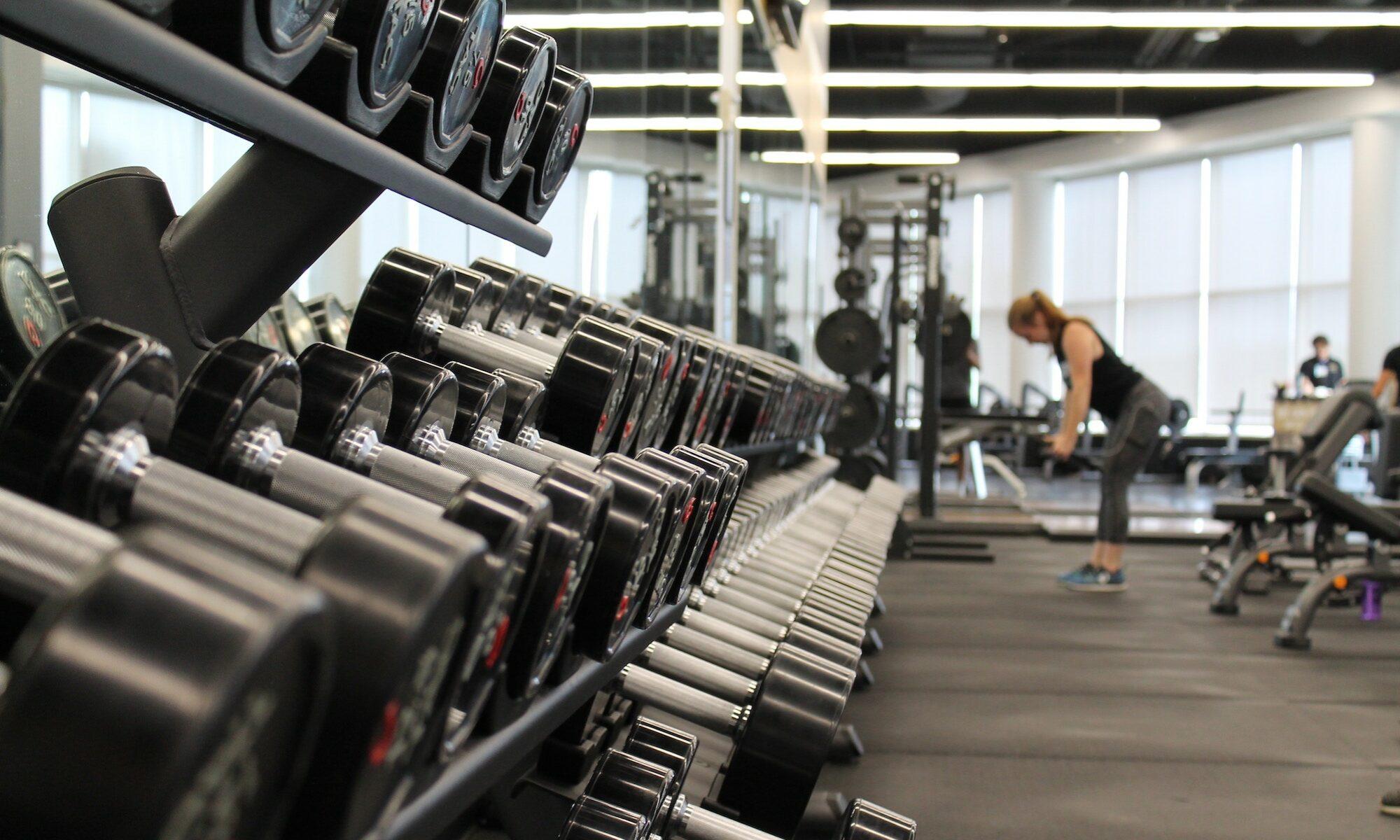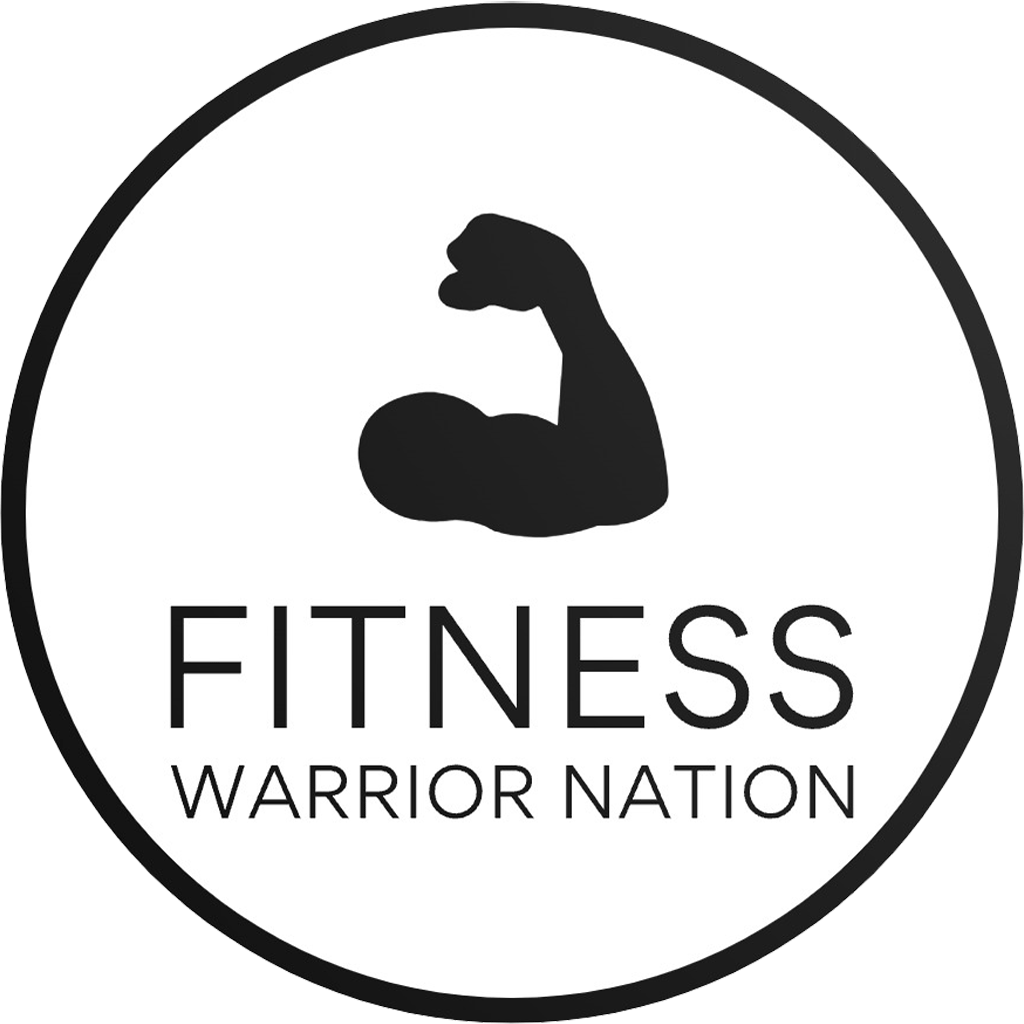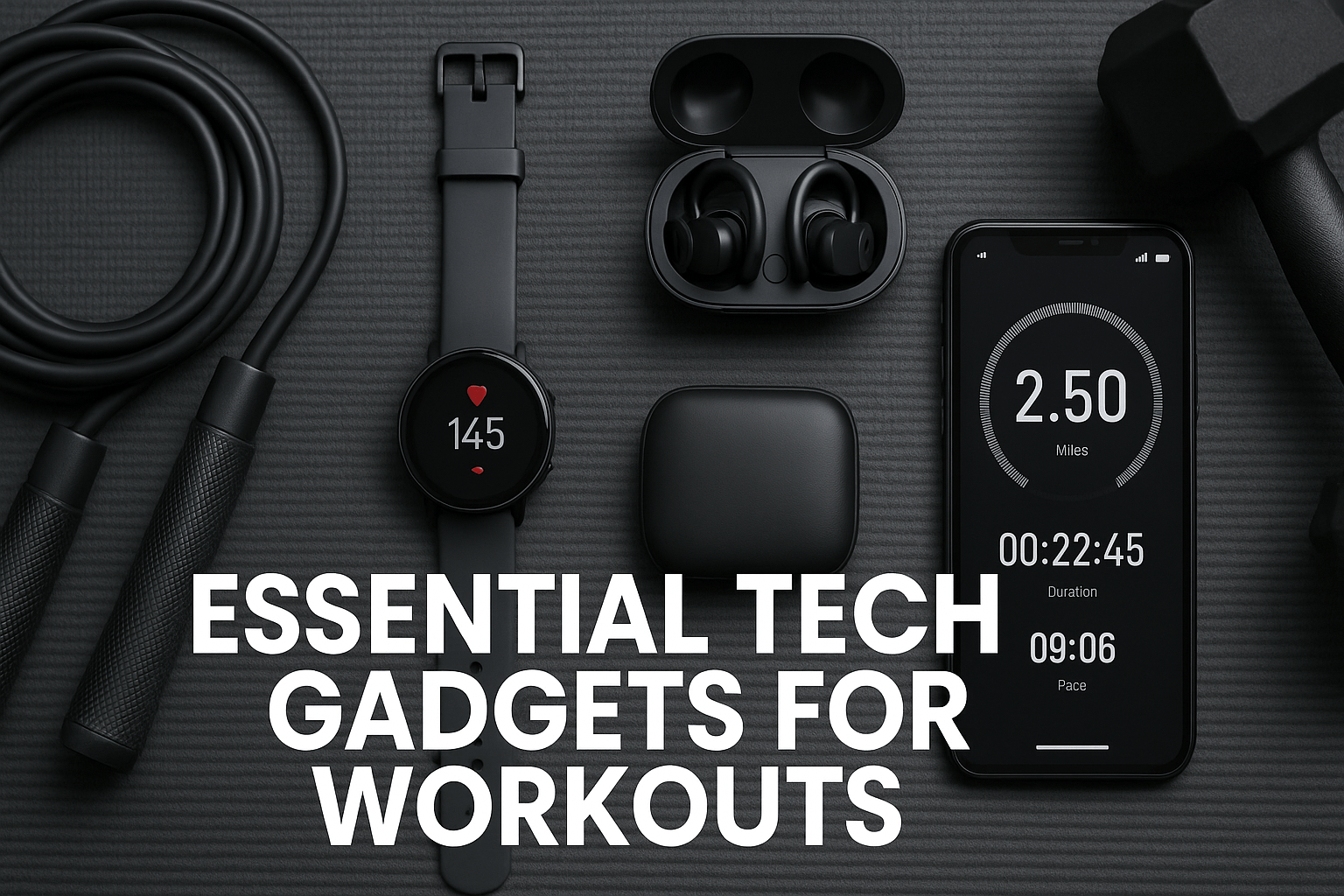As fitness tech evolves, 2025 brings a more integrated, data-driven approach to workouts than ever before. This guide dives into the gadgets I rely on daily, blending real-world testing with practical usage notes, so you can build a smarter, more motivating routine. From wearables that map your day to high-powered recovery tools and immersive home gym setups, these devices aren’t just gadgets—they’re catalysts for consistency, precision, and progress.
Tech Gadgets That Transform Workouts in 2025: A Deep-Dive from a CNET-Inspired Fitness Guru
Good gear doesn’t replace hard work, but it can tilt the odds in your favor—especially when you’re juggling travel, work, and family. In 2025, I’ve prioritized devices that seamlessly integrate with daily life, deliver consistent data, and offer actionable insights rather than flashy features. The list below is organized around core workout phases: preparation, performance, and recovery, with concrete examples drawn from brands you’ve likely heard of—Fitbit, Garmin, Apple, Samsung, Peloton, Theragun, Bose, Whoop, JBL, and Hydrow—and the ecosystems they create.
Why 2025 matters: more athletes recognize that a great device pays for itself over time by reducing wasted effort, preventing overtraining, and guiding nutrition and sleep strategies. The era of “one-off gadgets” is over; the best tech supports a holistic health rhythm: wakefulness, readiness, training load, and recovery. Below, you’ll find a practical framework for evaluating gear, followed by a curated set of devices that consistently perform in both gym and travel environments.
- Evaluating reliability: battery life, app stability, and data accuracy matter more than marketing buzz.
- Integration advantage: devices that play well with your smartphone and cloud services save time and reduce friction.
- Personalization: hardware and software should offer adaptive programs and feedback aligned to your goals.
- Portability and durability: especially for frequent travelers, compact options with robust builds win long-term loyalty.
- Value proposition: look for devices that yield clear workouts, not just noise or gimmicks.
From a testing lens, the best gadgets blend leading-edge sensors with human-centric design. They measure what matters, present insights in a clear, actionable way, and encourage consistency through motivation rather than intimidation. In the sections that follow, you’ll see how I apply these principles across different devices and use cases, with practical stories about how each tool fits into a busy fitness lifestyle.
- The day-to-day impact of wearables on training structure and routine.
- Recovery tech and sleep optimization as multipliers for performance.
- Home gym ecosystems that replace clutter with one central hub.
- Phone-as-coach experiences: the best apps and services that deliver real value.
For readers who want concrete starting points, I’ve linked to several reliable resources that align with the 2025 fitness tech landscape, including gear reviews, award lists, and product roundups. These references help you compare how different ecosystems shape your workouts, whether you’re a Peloton devotee, a Garmin enthusiast, or exploring a new path with Hydrow or Theragun.
Related reads and resources:
- Fitness trackers for outdoor training—buying guide and best practices for outdoor enthusiasts.
- Tom’s Guide Awards 2025 gadgets—an annual snapshot of standout performers and why they matter.
- Fitness gadgets and motivation—how tech can spark consistency.
- Fitness hotel workout rooms—solutions for staying on program while traveling.
- GQ Fitness Awards—what the best-in-class devices have in common.
Two practical examples illustrate how the ecosystem approach translates into real outcomes. First, a long-haul traveler who relies on a compact triage of devices—an Apple Watch for daily readiness, a Fitbit for continuous activity tracking, and a Garmin device for outdoor workouts—can maintain structure without sacrificing recovery. Second, a home gym user who wants a minimal but powerful setup might lean on a Peloton bike, a Tonal or strong resistance system, plus a Hydrow rower to diversify cardio while minimizing equipment clutter. These narratives illustrate how the tech stack becomes a personal system rather than a collection of disconnected gadgets.
Why this section matters for 2025 athletes
The central takeaway is practical: in 2025, the most impactful tech isn’t the loudest gadget but the one that creates a reliable feedback loop. When you wear a device and consistently review the data, you begin to see patterns—your sleep quality dips after an intense session, your heart-rate variability improves after a lighter week, your nutrition choices align with training loads. The payoff is a more sustainable, enjoyable training cycle. This isn’t about chasing novelty; it’s about building a system you trust. The following sections dive into the practicalities of wearables, recovery tools, and home gym ecosystems, with a focus on actionable tips you can apply today.
Wearables as a daily coach: a practical framework
When I assess wearables, I prioritize three factors: accuracy, relevance, and user experience. Accuracy matters because misleading data can derail a training plan. If a device overestimates VO2 max or misreads sleep stages, you’ll misinterpret readiness. Relevance means the data should inform decisions—optimize sleep windows, adjust training intensity, and guide recovery sessions. A seamless user experience reduces friction, making you more likely to use the device consistently. A concrete example is Whoop and Oura Ring for sleep and readiness, paired with a Garmin or Apple Watch for daily activity and structured workouts. Many athletes appreciate the “near zero setup” ethos: you wear it, it tracks, you act.
To build momentum, I recommend a simple starter kit: one primary wearable for day-to-day data, one recovery-focused device, and a workout companion that fits your preferred training style (e.g., Peloton for cycling, Hydrow for rowing, or a tonal system for resistance). This triad covers most goals: endurance, strength, and recovery. Remember to set expectations: data is a guide, not a dictator. Use the numbers to inform decisions, not dictate them, and adjust as you learn what really works for your body.
Key devices frequently used in 2025 workflows include a reliable Apple ecosystem for sleep tracking and health insights, a dedicated Fitbit or Whoop for readiness and sleep, a robust Garmin model for outdoor workouts, and a quality audio companion from Bose or JBL to keep motivation high during sessions.
- Apple Watch Series 11 or later for health metrics, sleep tracking, and long battery life.
- Fitbit devices for ground-level activity insights and quick daily goals.
- Whoop for strain-recovery balance through HRV and sleep performance.
- Garmin for GPS-based training plans and outdoor tracking precision.
- Hydrow for engaging, low-impact cardio with a strong rower community.
In our next section, we’ll zoom into recovery and sleep tech—where the real multipliers live for performance gains. The link between sleep quality, training load, and daytime energy is undeniable, and the right devices can help you optimize it without complicating your routine.
Investment-grade wearables and smart tracking: turning data into daily gains
When it comes to wearable tech, 2025 has raised the bar for actionable insights. The best devices don’t just count steps—they translate data into training decisions you can act on, in real time. For many athletes, the decision comes down to ecosystem: which devices synchronize best with your phone, your preferred apps, and your existing gear? A few brands stand out for reliability and long-term value: Apple, Garmin, Fitbit, Whoop, and Samsung. The common thread is that each brand has invested in meaningful data presentation and robust third-party compatibility. This means your data travels with you, rather than living in a silo.
In practice, wearables guide four core routines:
- Morning read: Readiness score, heart rate variability, and sleep debt inform your training intent for the day.
- Active day: Step counts, distance, and intensity help you plan micro-workouts and recovery periods.
- Pre-workout: Real-time metrics like heart rate zones and power data optimize warm-ups and long sessions.
- Post-workout: Recovery windows, sleep cues, and nutrition reminders close the loop for tomorrow’s session.
To illustrate, imagine a typical travel week where you’re hopping between airports, hotels, and client meetings. The combination of a compact wearable (e.g., a Fitbit or Whoop strap) plus a smartwatch (such as Apple Watch) helps you stay accountable without sacrificing mobility. When you’re in a hotel gym, the Peloton app or a simple bodyweight routine with guided sessions can keep you on track. And when you’re back home, a long ride on a Peloton bike or a row by Hydrow adds variety while keeping your forward momentum intact.
In addition to personal routines, I also pay attention to the broader ecosystem: device integration with Garmin or Apple health data, third-party coaches, and training programs. A powerful user experience means you spend more time training and less time managing devices. The right wearable should feel like a reliable assistant, quietly supporting decisions rather than shouting data at you.
Key takeaways for 2025 wearables: prioritize a cohesive ecosystem, ensure data is actionable, and select devices that work well in real-world scenarios—whether you’re commuting, traveling, or training at home. The result is a sustainable practice with fewer excuses and more consistent progress.
The gear we rely on: a practical gear checklist for 2025
Here’s a concise checklist I use when choosing new wearables or updating existing gear. It’s designed to help you avoid over-investment while ensuring you have the tools that truly move the needle.
- Battery life of at least 5-7 days for wearables and 24-48 hours for advanced training watches.
- Accurate heart rate, sleep, and activity tracking, with transparent data access and export options.
- Compatibility with Apple Health, Google Fit, Samsung Health, and popular fitness apps.
- Robust on-device coaching options and a clear path to personalized programs.
- Durability and comfort for daily wear, including during workouts and sleep.
Recovery tools and sleep tech: unlock your best days with regenerative routines
Recovery is where the magic happens. Without adequate rest, even the best training plan stalls. In 2025, recovery devices have become more sophisticated and accessible, but the best ones remain lean and purpose-driven. The most compelling options combine compression, massage, and sleep insights to reduce muscle soreness, improve circulation, and speed up readiness for the next session. Brands like Theragun, Oura, and Whoop sit at the center of this conversation, but the real value comes from how you apply the data to your sleep schedule and post-workout routines.
Recovery isn’t just about soreness management; it’s about overall readiness. A typical scenario might involve a late training session followed by a structured cooldown using a Theragun device, a 20-minute soft tissue release routine, and a sleep window aligned with your next day’s training load. The concept of “sleep-first” training is increasingly popular: if your sleep discipline is weak, you’ll struggle to maximize the benefits of high-intensity workouts. In 2025, this realization is widely accepted among serious athletes who want sustainable progress over quick wins.
- Theragun devices for targeted massage and tissue release, with multiple attachments for different muscle groups.
- Whoop or Oura Ring for sleep scoring, readiness, and recovery insights.
- Bose sleep headsets or noise-canceling headphones to improve sleep quality in noisy environments.
- JBL or Bose speakers for relaxing soundscapes or guided meditation after workouts.
- Sleep hygiene practices aligned with training load to optimize performance windows.
Recovery is not optional; it’s a strategic investment. The better you recover, the more consistently you can train hard, and the more likely you are to hit your performance targets. For more on sleep-focused strategies, check out the linked resources and community discussions in the references below.
Sleep science and consumer tech: practical gains you can feel
Sleep isn’t a luxury; it’s a performance tool. The newest sleep trackers deliver a richer view of sleep stages, interruptions, and recovery readiness. A day that starts with better sleep tends to feature higher-quality workouts and faster reaction times. For athletes juggling family and work, devices that simplify sleep tracking without adding friction are a game changer. The Oura Ring 4 has stood out for holistic health insights, from circadian alignment to stress management indicators, while the Apple ecosystem has elevated hypertension risk alerts to a broader audience, adding an important dimension to health monitoring for some users. As always, clinical measurements should be used in consultation with healthcare professionals, but consumer devices can provide a meaningful daily read on how sleep interacts with your training plan.
Look for features that matter: sleep stage tracking accuracy, readiness scores, sleep consistency trends, and the ability to correlate sleep data with training load. A clear signal that a device is worth adopting is if it helps you adjust your bedtime or wind-down routine in a way that you can verify through improved daily performance, not just a number on a screen. In practice, you’ll want a simple, repeatable pre-sleep ritual—dim lights, consistent bed times, and a relaxation protocol—that your devices can support rather than replace. This is where the educational value of wearables meets the practical value of sleep hygiene.
For those readers who want to explore more about sleep and fitness tech in 2025, these sources offer deeper dives into semi-advanced sleep science and consumer device capabilities:
- Fitness hotel workout rooms for travel-friendly recovery environments.
- Trending simple workout health for approachable routines that fit busy lives.
- Mohamed Salah fitness secrets—elite-level recovery approaches that scale to amateurs.
Home gym ecosystems: Tonal, Peloton, Hydrow, and the quest for minimal clutter
In 2025, the home gym is less about a room filled with machines and more about a cohesive, adaptable system. The best setups combine high-bandwidth, space-efficient resistance and cardio with immersive content that keeps you engaged. A central hub—whether a Tonal or a Peloton ecosystem—acts as the command center, while accessory devices like a smart rower (Hydrow) or a compact massage tool keep recovery integrated into the routine. The key is compatibility and scalability: as your goals evolve, your system should expand without becoming a maintenance headache. This approach aligns well with modern living spaces, where dedicated gym space is a luxury for many, but functional, modular equipment can still deliver robust results.
When selecting home-gym gear in 2025, consider:
- Resistance versatility: can the system mimic free weights, machines, and integrated movements?
- Software versatility: are there thousands of on-demand workouts with live classes and progress tracking?
- Space efficiency: how much floor space does it consume, and can it fold away?
- Ease of use: is the setup intuitive enough to keep you training consistently?
- Support and updates: does the device receive ongoing software improvements and new content?
A practical home gym might include a high-quality smart bike or rower (Peloton or Hydrow), a versatile resistance system (Tonal or a cable-based setup), and a complementary massage or recovery device (Theragun). This trio can cover strength, cardio, and recovery while keeping the space tidy and the practice enjoyable. For readers who want a fully fleshed-out comparison, you can consult the award-roundups and product guides linked above. A well-chosen home gym is not merely a purchase; it’s a commitment to a sustainable training lifestyle that scales with your goals.
Financing and value: making a smart long-term decision
Investing in a home gym is a decision that benefits from a clear financial plan. You’ll want to map out upfront costs, ongoing subscription fees, and the incremental value of each piece over time. A practical approach is to start with a core system (e.g., Peloton bike or Hydrow) and a flexible resistance solution (like Tonal). If you’re unsure about a big-ticket purchase, consider renting options or financing plans that allow you to evaluate real-world value before committing. A well-designed system should become a fixture in your routine, not a recurring source of regret. The long-term payoff is more consistent training, fewer excuses, and a home gym that actually gets used year-round.
FAQ
What’s the best wearable for a beginner starting 2025 workouts? Start with a primary wearable that integrates with your phone and apps you already use. An Apple Watch or a reliable Garmin model with HR and GPS can cover most basics. Pair it with a recovery device like Whoop or Oura Ring to track sleep and readiness. The goal is a simple, cohesive stack that grows with your skills and goals.
Should I buy a Peloton or Hydrow for cardio? Both are excellent choices, but your decision should hinge on content, space, and budget. Peloton emphasizes a broader class ecosystem and community, while Hydrow offers immersive row-based workouts with a distinctive feel. If you value variety and social features, Peloton is compelling; if you want a low-impact, highly engaging cardio modality with a strong rowing focus, Hydrow is a strong fit.
Is a Theragun essential for recovery? Not strictly essential, but it can be a powerful multiplier for recovery if you work out hard or deal with persistent soreness. The right massage device helps with tissue quality and range of motion, which in turn supports training consistency. Start with a model that offers multiple heads and adjustable intensity to tailor your recovery sessions.
How do sleep trackers improve performance? Sleep trackers identify your sleep duration, quality, and interruptions, helping you align training loads with your recovery capacity. Consistent, quality sleep correlates with better mood, focus, and physical performance. The goal is to translate data into predictable changes in your routine, not to obsess over every minor fluctuation.
For more guidance, explore additional resources and expert perspectives at the links below:


